The U.S. Bureau of Land Management has announced its final decision to auction off over 19,600 acres of land to oil companies in June. The move could pave the way for oil drilling along the boundary of the Los Padres National Forest, nearby public lands like the Carrizo Plain National Monument, and privately-owned farmlands.
Concerned citizens can challenge the inclusion of certain parcels in the auction. Formal protests are due in the agency’s Sacramento office no later than Tuesday, May 30.
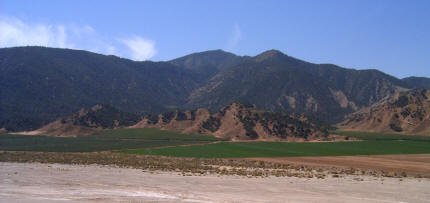 The BLM first announced the auction back in April, and released a draft Environmental Assessment for public review. Last month, ForestWatch submitted a detailed letter pointing out that the agency’s analysis was scientifically and legally flawed, and that the agency had not satisfied strict requirements designed to protect wildlife, clean air and water, prime farmlands, and floodplains from oil drilling damage. Officials have decided to ignore most of our concerns and proceed with the land auction, despite these shortcomings.
The BLM first announced the auction back in April, and released a draft Environmental Assessment for public review. Last month, ForestWatch submitted a detailed letter pointing out that the agency’s analysis was scientifically and legally flawed, and that the agency had not satisfied strict requirements designed to protect wildlife, clean air and water, prime farmlands, and floodplains from oil drilling damage. Officials have decided to ignore most of our concerns and proceed with the land auction, despite these shortcomings.
The auction is now officially scheduled for June 14 in Sacramento, a five-hour drive from the lands on the auction list. Every lease sale since 1999 has been held in Bakersfield near the lands to be auctioned. This time, officials have selected the Sacramento location, making it very inconvenient for local landowners and other concerned citizens to attend.
During the auction, oil companies will be able to bid on the rights to extract oil and gas from these parcels. The drilling rights will go to the highest bidder, with minimum bids starting at only $2.00 per acre.
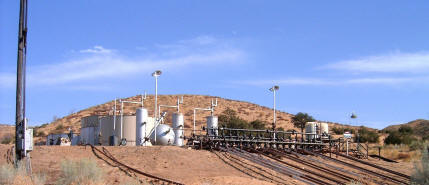 Many of the lands slated for auction are located along main access routes leading into the national forest. Most of the parcels are undeveloped, and many are under cultivation by farmers. Allowing a network of oil rigs, pipelines, and transmission wires will significantly change the rural landscape of this area.
Many of the lands slated for auction are located along main access routes leading into the national forest. Most of the parcels are undeveloped, and many are under cultivation by farmers. Allowing a network of oil rigs, pipelines, and transmission wires will significantly change the rural landscape of this area.
In addition, each of the 34 parcels provides habitat for several threatened and endangered plants and animals, including the San Joaquin kit fox, the California condor, the California jewelflower, and the blunt-nosed leopard lizard, according to the agency.
These lands were originally slated for auction in December 2005. The BLM cancelled that auction after ForestWatch challenged it. Not only did the BLM fail to properly notify the public about the auction, but it also forgot to conduct an environmental study. At the same time, ForestWatch filed a Freedom of Information Act request and, after the agency denied ForestWatch access to most of the documents, we filed a lawsuit. That lawsuit is currently pending before the U.S. District Court for the Eastern District of California.
Now, the BLM has announced that most of these same parcels will be auctioned at an upcoming “competitive lease sale” scheduled for June 14, 2006 in Sacramento. This time, the agency has prepared an Environmental Assessment to study the environmental damage caused by oil drilling in these areas. Unfortunately, the EA does not meet even the most minimal requirements to protect these lands.
Split Estates – Private Lands, Public Minerals
Nearly 3,000 acres of the lands to be auctioned are public lands administered by the Bureau of Land Management. The remainder of the lands – 85% – are called “split estate” lands (privately-owned surface lands with federally-owned mineral rights).
Leasing split-estate lands has become very controversial in other areas of the country that are experiencing similar expansion of oil and gas drilling. This is because the BLM does not notify the surface landowner when the agency proposes to lease the underground minerals. Often, oil companies bid on split-estate leases without the consent, or even the knowledge of, the surface landowner.
Once an oil company wins the right to drill for federal oil on private lands, the oil company may have the right to conduct geophysical exploration and seismic tests, to construct roads to drill sites, to take water, to dispose of wastewater, to install tanks and pipelines, and to enter the land for oil drilling.
Despite the significance of this lease sale to private landowners in the Upper Cuyama Valley, the BLM failed to notify a single one of them during the public comment period. They did not notify ForestWatch either, but did notify several oil companies, according to officials. These oil companies, it seems, receive special treatment at the expense of public participation and environmental protection.
ON THE AUCTION BLOCK: Los Padres Forest Boundary
6 parcels, 7,292 acres
Four of the parcels share a boundary with the Los Padres National Forest, in Santa Barbara and Kern counties near the intersection of Scenic Highway 33 and the Maricopa Highway (Route 166). Two others are within a half-mile of the forest boundary.
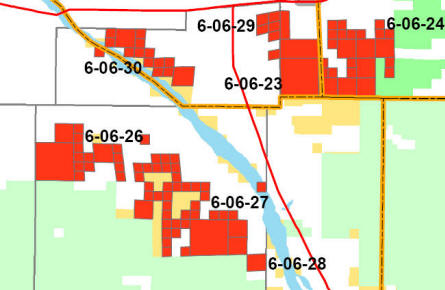 Many of these parcels are in Santa Barbara Canyon, which serves as a gateway leading into the northern portion of the Dick Smith Wilderness Area in the forest.
Many of these parcels are in Santa Barbara Canyon, which serves as a gateway leading into the northern portion of the Dick Smith Wilderness Area in the forest.
These lands are located in the Upper Cuyama River Valley, which federal biologists have called an “Area of High Ecological Significance” because of the abundance of rare plants and animals here. According to the BLM, this area is home to the endangered San Joaquin kit fox, the threatened blunt-nosed leopard lizard, the threatened San Joaquin antelope squirrel, the endangered California jewelflower, and the endangered California condor.
ON THE AUCTION BLOCK: Cuyama River
2 parcels, 1,000 acres
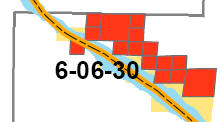 Two parcels along the banks of the Cuyama River are slated for auction. According to the agency, these parcels are located in the floodplain of this river. Oil drilling in a floodplain is not appropriate due to the increased risk of oil spills into the river. Drilling, access roads, and power lines would also interfere with farmlands in the area that are currently under cultivation.
Two parcels along the banks of the Cuyama River are slated for auction. According to the agency, these parcels are located in the floodplain of this river. Oil drilling in a floodplain is not appropriate due to the increased risk of oil spills into the river. Drilling, access roads, and power lines would also interfere with farmlands in the area that are currently under cultivation.
ON THE AUCTION BLOCK: Carrizo Plain National Monument Bdy
4 parcels, 1,876 acres
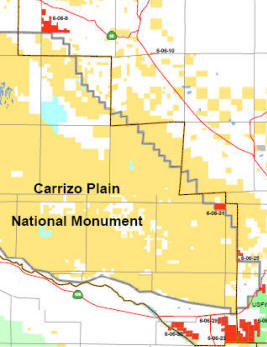 Four parcels are located along the eastern boundary of the Carrizo Plain National Monument, an area set aside by Presidential Proclamation in 2001 to protect one of the last remaining untouched ecosystems in the San Joaquin Valley.
Four parcels are located along the eastern boundary of the Carrizo Plain National Monument, an area set aside by Presidential Proclamation in 2001 to protect one of the last remaining untouched ecosystems in the San Joaquin Valley.
These parcels are home to the threatened San Joaquin kit fox, the threatened San Joaquin antelope squirrel, the threatened blunt-nosed leopard lizard, and the endangered California condor.
ON THE AUCTION BLOCK: Bitter Creek National Wildlife Refuge
2 parcels, 2160 acres
Slated for auction are two parcels just outside the boundary of the Bitter Creek National Wildlife Refuge, in the southwestern San Joaquin Valley foothills. The refuge shares a boundary with the Los Padres National Forest. The federal government purchased this 14,097-acre refuge in 1985 to protect dwindling California condor foraging and roosting habitat, and it’s now protected as “critical habitat” for the endangered bird. It’s the site where the last female condor was trapped in 1986 for the captive breeding program.
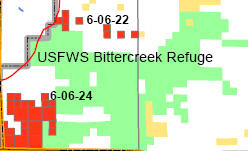
OFF THE AUCTION BLOCK: Wind Wolves Preserve
4 parcels, 203 acres
In December, the BLM proposed leasing four parcels located inside the Wind Wolves Preserve, the largest privately-owned nature preserve in the West. The 97,000-acre preserve is located in the southern San Joaquin Valley, adjacent to the Los Padres National Forest. The preserve is in an ecologically unique region where the Transverse and Coast Ranges, Sierra Nevada Mountains, western Mojave Desert, and San Joaquin Valley converge.
We are happy to announce that the BLM has removed these parcels from the lease sale. The Wind Wolves Preserve is protected from additional oil drilling for now.
What’s Next
This auction comes on the heels of a plan, approved in July, to open up 52,075 acres of the Los Padres National Forest to oil drilling. The parcels up for lease in June are outside of the forest, and not a part of that plan. However, allowing drilling on lands right along the forest boundary could eventually make it easier for oil companies to expand their operations inside the forest.
Concerned citizens can challenge the inclusion of certain parcels in the auction. Formal protests are due in the agency’s Sacramento office no later than Tuesday, May 30. Consult the Lease Sale Notice for information on how to file a formal protest. If you intend on filing a formal protest, contact us so that we can help coordinate various protests that may be filed.
If the auction goes ahead as scheduled, the oil company placing the highest bid wins the right to drill for oil in the lease area. The oil company may then conduct surveys, often using explosives or “thumper trucks” to detect the location of oil. The company then submits an Application for Permit to Drill and a Surface Use Plan of Operations for approval. Once approved by federal agencies, drilling can begin immediately.







Comments are closed.